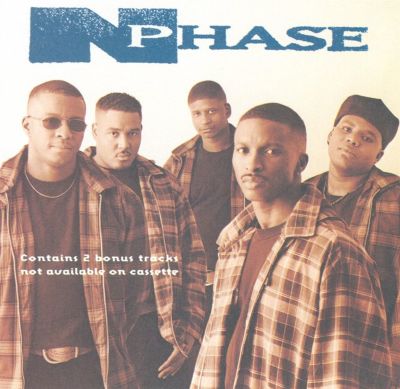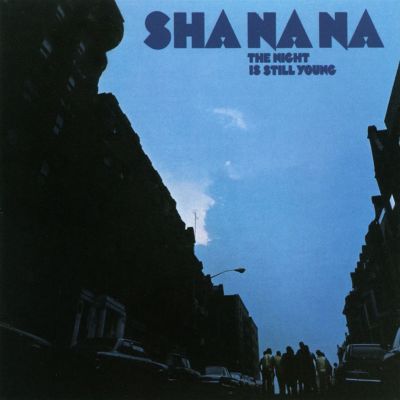Staff Picks for August 2013
August 31, 2013
Built around the epic single "Trojan Guitar," one of the most ludicrous and satisfying hard rock songs of the early 21st century, Justin Hawkins' opulent, obstinate, and absurd first post-Darkness/rehab outing was exactly what we all deserved after not fawning over 2006's One Way Ticket to Hell...And Back.
August 29, 2013
The recent release of two dozen early unreleased tracks from Mike Paradinas' µ-Ziq project made me go back and listen to his first record. It's not only my favorite but one of his best, pairing otherworldly effects and surprisingly tough percussion, as though Perrey and Kingsley had grown up on Detroit techno. It's one of those classic debuts where youth and inexperience produce a work that breaks all the rules in all the right ways.
August 28, 2013
With Jimmy Jam and Terry Lewis' revolutionary new jack production behind her, Miss Jackson's third album pulled her out of her older brother's shadow by boasting six hugely successful radio singles, including "Control", "Nasty", "The Pleasure Principle", and "What Have You Done For Me Lately."
August 27, 2013
Some records are growers and, for me, no 2013 LP has grown on me like the Band Perry's second album, Pioneer. It's not so much that I've revisited the album often but rather the singles have embedded into my subconscious and I now find them irresistible, particularly the hard-charging country-funk rhythms of "Done" which is the single this summer that I never switch away from whenever it comes on the radio. The rest of the record—including the previous single "Better Dig Two"—is growing nicely, too.
August 26, 2013
Showing that black metal doesn't always have to be so dark, Deafheaven's brilliant Sunbather takes the genre to soaring new height, mixing in elements of shoegaze and post-rock to create an album that's powerful, beautiful, and a little bit terrifying. Some might call it "hipster" black metal, but it's as good or better than anything "kvlt" this year.
August 25, 2013
Various Artists
Lately, I've been feeling nostalgic for '80s college rock and Rhino's 82-track box set, Left of the Dial: Dispatches from the '80s Underground, has been taking me right back to the days when you could hear Dinosaur Jr., The Smiths, and Ministry all in a row, if you tilted the antenna just so on your boombox.
August 24, 2013
Various Artists
Motown was not doing especially well in 1972 but that's one of the reasons The Complete Motown Singles, Vol. 12A: 1972 is such a fascinating listen: they have superstars and they have the rest of their roster, a bunch of soul, bubblegum, funk and AM pop nonsense all trying to get on the charts. The bigger story is that Motown moved from Detroit to Los Angeles in '72, so perhaps it isn't surprising that the songs here that aren't by Marvin, Stevie or Michael have a bit of a showbiz glitz to them but that's the appeal: for better or worse, this is the sound of '72.
August 23, 2013
By 1996, the lounge music revival of the '90s began to produce warped offspring like Sukia's debut album, which proved the group was as fond of musique concrete and adult movie soundtracks as they were of Esquivel and Les Baxter. The Dust Brothers' production gives this journey into lounge's seedy underbelly just the right amount of sleaze.
August 22, 2013
Think of Son Of Schmilsson as the second debut from Harry Nilsson, the record that offered a clean break from his previous work and ushered in an era of sheer madness. Unlike the sozzled Sandman, Nilsson is still caring about craft here but his crassness remains a shock. The punchline of "You're Breaking My Heart" has become a well-worn joke but it still feels bracingly crude but that's just the tip of the vulgarity here. It effectively stopped his career cold (he revived it with the standards of A Little Touch of Schmilsson in the Night) but its bad taste is eternal.
August 21, 2013
Neo-soul was a shrewd marketing term, but it did a disservice to dozens of '90s acts that maintained deep connections to classic R&B. This South Carolina group is one example, whose lone album is highlighted by the R. Kelly-produced Top 25 R&B ballad "Spend the Night," as well as Manhattans and Commodores covers.
August 20, 2013
With the release of Toropical Circle, Takako Minekawa's first album in over a decade, the time seems right to revisit her last set of songs before going on hiatus. Fun9 is as delightful as ever, serving as both a time capsule of Shibuya-kei's whimsical late-'90s heights and as an indicator of the more experimental path she took in the 2010s.
August 19, 2013
Reunion albums can be tricky. All too often, in worst case scenarios, it becomes obvious the band just doesn't cut it anymore. This is not the case with O.C. Confidential, the first Adolescents album since 1988’s Balboa Fun Zone. This album plainly gives an honest representation of where the Adolescents have been since 1988, thankfully not rehashing hardcore clichés or forgetting how to have fun.
August 18, 2013
Caught between the shifting tides of mid-'70s rock & roll, the Winkies were a pub rock band who backed Brian Eno and was produced Guy Stevens on their 1975 debut and, to confuse matters more, their homoerotic artwork was designed by Hipgnosis, the design firm behind Pink Floyd's iconic images. All this is a roundabout way to say The Winkies really didn't fit into any category: they were too arty for pub rock, too down and dirty for art-rock, they covered Bob Seger, Bob Dylan and Johnny Horton, then wrote originals that either hit hard or floated away. These idiosyncrasies doomed the band commercially in '76 but, years later, the album sounds like a quirky little classic awaiting a cult of its own.
August 17, 2013
It's no wonder the band's moody ninth album, released in 1974, produced no hits. ("I scream from a skull/Fritz, bring your wigwam," anyone?) A bit on the inscrutable and aimless side, it nonetheless has some moments, such as the bleak "Graveyard People," a precursor to side two of Radiohead's Kid A.
August 16, 2013
Issued in 1974, the artist's iconic third album for Blue Thumb was the first time he merged all of his considerable strengths into a seamless whole. Fingerpopping, funky modern jazz, hipster poetry, R&B, and grooves galore, are all displayed in this set of fine originals and expertly chosen covers played by an all star session band.
August 15, 2013
Their name is hard to spell, for some people anyway, but the music the Swedish trio plays is easy for anyone with a soft spot for Dolly Mixture, the Shop Assistants and/or Talulah Gosh to love deeply and truly. Also, madly. Their 2009 record for Slumberland is short, but it brims with spiky sweet pop that is very familiar, yet is played with so much tightly coiled passion that it almost sounds new. Always nice to hear bands that have a heavy debt to the past pay it back by writing songs that aren't derivative in the least.
August 14, 2013
Show and Tell: The Best of Al Wilson includes 18 tracks that will remind listeners how durable the soul singer's recordings from the mid-'70s are. Wilson's best known hit "Show and Tell" shot to the top of the charts in 1974, but bad business decisions by his record company prematurely ended his status as a contending hitmaker. Even though this compilation doesn't include his early hit "The Snake," it gets the nod over Classic World's 2001 Spice of Life compilation which mixes re-recordings with Wilson's original hits.
August 13, 2013
There is an embarrassment of riches on Legacy's mammoth new Nilsson box The RCA Albums Collection but of these 17 discs I keep coming back to Harry's debut Pandemonium Shadow Show, possibly because it's been a long time since I've given it a proper listen. Nilsson did better albums—you could convincingly argue Aerial Ballet improves upon this blueprint—but the inventiveness of this 1967 defacto debut remains astonishing. This is a showcase for how he used the studio as an instrument (the Beatles pastiche "You Can't Do That" remains breathtaking) but also his songwriting burns brightly, with "1941," "Cuddly Toy" and "Without Her" anchoring this wonderful, idiosyncratic album.
August 12, 2013
The next time you feel angry or frustrated and you feel like breaking something, just toss on All Pigs Must Die's second album, Nothing Violates This Nature. With it's non-stop assault of metal menace, it's essentially the musical equivalent to going into your house and breaking, like, all the things, but with much less cleanup work and insurance claims afterwards.
August 11, 2013
Saxophonist Candy Dulfer's 1993 sophomore album amped up the hip-hop and R&B sound of her debut. She also brought her Prince influence full-circle by covering the Purple One's instrumental composition, "Sunday Afternoon." Throw in Les McCann's "Compared To What?," and a guest spot from Rapper Easy Mo Bee and you have an acid-jazz influenced party album that transcends the tepid limitations of the smooth jazz genre.
August 10, 2013
This compilation pulls off the hat trick of being a nice introduction to the deeper side of Redding's catalog, an intelligent, carefully considered facsimile of one of his original Stax albums, and a fresh statement on the issues and risks of love, all of which lead the listener straight back to the greatness of Otis Redding. It's the way reissues should work in a perfect world, not just presenting old material, but also arranging it in a striking new manner that leads us back to a great artist we thought we already knew.
August 9, 2013
Nobody's ever going to mistake Betty Boo for some kind of groundbreaking artist, but the two albums she put out in the early '90s are impressive feats of fluffy and fun dance pop that only a few others have come close to topping. This is her second record and it beats the first by being both more sophisticated and sillier, plus there's a higher (or is it lower?) hit/miss ratio. Plus, in a great moment in the history of WTF, it's produced by John Coxon of Spring Heel Jack.
August 8, 2013
Recorded in 1955, this album features the original version of Barbarin's classic New Orleans anthem, "Bourbon Street Parade." Backing Barbarin is an earthy and swinging group of Crescent City regulars including a young trumpeter and future Preservation Hall member, the late-John Brunious. Although ripe with New Orleans traditions from blues to second line, this album never feels "trad".
August 7, 2013
Keb Darge was well known back in the 2000s for his funk compilations, but over the past five years he's kicked it into gear with half-a-dozen sets charting an earlier era, everything from '50s rockabilly to '60s soul. The quality control is huge too: literally anything with his name on the cover is a guaranteed fun trip for everyone who thinks they’ve heard it all when it comes to rock & roll, surf, soul, Latin, or funk.
August 6, 2013
Think of this box, the second all-inclusive Feelgoods set in the last two years, as the hit years for Dr. Feelgood. When guitarist Wilko Johnson was in the band, they were a brutal R&B outfit but with Gypie Mayo taking his place the group streamlined a bit, partially aided by Nick Lowe who gave the Feelgoods their only genuine hit single ("Milk & Alcohol) and produced 1980's A Case Of The Shakes, the last of the four studio albums featured here (there are also two live LPs and a host of rarities). The slight New Wave sheen made the band sound more commercial at the conclusion of the '70s but it paradoxically sounds dated in a way the All Through The City box does not, and yet that's also the charm of Taking No Prisoners: it's an unrepentant rock & roll band gunning for a hit and still sounding good as they try to sell out.
August 5, 2013
Prepping for the forthcoming 17-disc The RCA Albums Box by listening to some of my favorite Harry Nilsson albums, including Sandman, a wild, wooly 1975 album from the great man. There are no hits here but there is much mad brilliance here, including "Jesus Christ You're Tall" which boasts the immortal couplet "So maybe a big scout from a big town team will come and sign him to the Meadowlarks/And then someday, someday he'll play as good as Van Dyke Parks"
August 4, 2013
This incredibly obscure album was recorded in 1976 by a group of friends in Indianapolis but sounds like the best of San Francisco's psychedelic summer of love. Brilliant songwriting, drifty vocal harmonies ala Jefferson Airplane's best and enough experimental tendencies to make this a must-hear acid folk classic.
August 3, 2013
It may be one of the silliest ideas for an album cover and title in jazz history (which is saying something), but Sonny Rollins made the concept his own with the rootin'est, tootin'est tenor solo ever heard on a version of “I’m an Old Cowhand.” Of all his classic sessions (and there were a lot), this is probably the easiest to love.
August 2, 2013
I've always considered Sha-Na-Na as little more than a tiresome televised joke--an assessment that's more or less true, given the way their career played out. Given that, I was kind of shocked to hear the new reissue of their 1972 album The Night Is Still Young and discover that not only there's not much refurbished doo wop, but that much of it is first-rate silly bubblegum pop. Unexpected fun.
August 1, 2013
Byrne & Eno's 2008 return to collaboration was a voluminous, majestic affair, highlighting each player's weird affinities for pop and skewed production. Strongly melodic to the point of every song having an anthem-like spirit, the album beams with optimism and a sense of rejuvenation, with old friends bringing out the very best in each other's music.






























